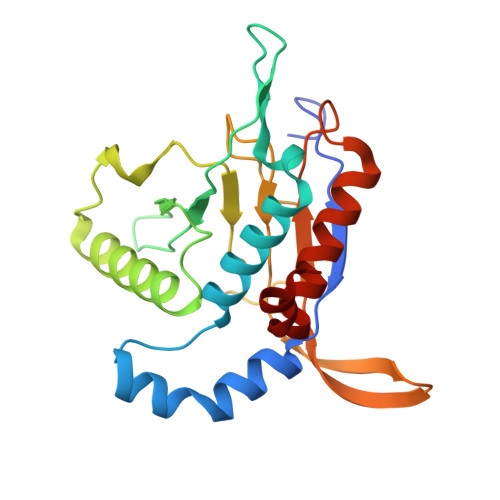Assembly and architecture of endogenous NMDA receptors in adult cerebral cortex and hippocampus.
Zhang, M., Feng, J., Xie, C., Song, N., Jin, C., Wang, J., Zhao, Q., Zhang, L., Wang, B., Sun, Y., Guo, F., Li, Y., Zhu, S.(2025) Cell 188: 1198-1207.e13
- PubMed: 39855198
- DOI: https://doi.org/10.1016/j.cell.2025.01.004
- Primary Citation of Related Structures:
8XLJ, 8XLK, 8XLL, 9JNN - PubMed Abstract:
The cerebral cortex and hippocampus are crucial brain regions for learning and memory, which depend on activity-induced synaptic plasticity involving N-methyl-ᴅ-aspartate receptors (NMDARs). However, subunit assembly and molecular architecture of endogenous NMDARs (eNMDARs) in the brain remain elusive. Using conformation- and subunit-dependent antibodies, we purified eNMDARs from adult rat cerebral cortex and hippocampus. Three major subtypes of GluN1-N2A-N2B, GluN1-N2B, and GluN1-N2A eNMDARs were resolved by cryoelectron microscopy (cryo-EM) at the resolution up to 4.2 Å. The particle ratio of these three subtypes was 9:7:4, indicating that about half of GluN2A and GluN2B subunits are incorporated into the tri-heterotetramers. Structural analysis revealed the asymmetric architecture of the GluN1-N2A-N2B receptor throughout the extracellular to the transmembrane layers. Moreover, the conformational variations between GluN1-N2B and GluN1-N2A-N2B receptors revealed the distinct biophysical properties across different eNMDAR subtypes. Our findings imply the structural and functional complexity of eNMDARs and shed light on structure-based therapeutic design targeting these eNMDARs in vivo.
Organizational Affiliation:
Center for Neurological and Psychiatric Research and Drug Discovery, State Key Laboratory of Drug Research, Shanghai Institute of Materia Medica, Chinese Academy of Sciences, Shanghai 201203, China; University of Chinese Academy of Sciences, Beijing, China.


















